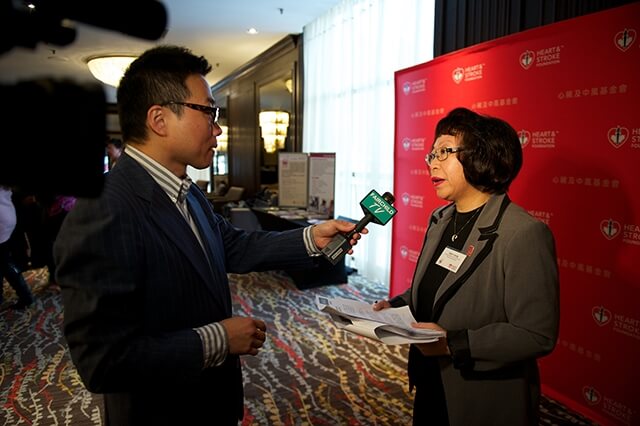- Earlier this year, Rena Heer, a former reporter for CTV and CP24 in Toronto, hosted a gathering at her home for other fellow Canadian Sikhs who had experience in the communications and media profession. This was not the usual Sunday afternoon chai and gossip session ubiquitous to South Asian households across the Lower Mainland. The guests had convened to discuss a chronic problem that had plagued this community since the 1980s: negative coverage in mainstream media.
This time, Canada’s prime minister, having previously bragged he had more Sikhs in his cabinet than India’s Prime Minister Narendra Modi, had travelled to India with four of his ministers of Sikh faith. It touched a nerve with India’s “alt-right” Hindu-chauvinistic administration. Indian politicians let loose with a series of flimsy allegations, including some that implicated Trudeau’s own cabinet ministers as “Khalistanis”, and in particular, decorated Canadian war veteran and Defence Minister Harjit Sajjan.
Indian media lapped it up. Canadian media regurgitated it.
Canada’s predominantly white newsrooms ran with panic-stricken pieces about how there is a “revival of Khalistan terror”, or how Canadian Sikhs are engaged in “blood hatreds”—or in an attempt to bundle Sikhs with ISIS terrorists—how Sikhs are “promised a place in paradise” when martyred.
Heer was one of a handful of journalists in Canada from the Sikh community who had worked in mainstream newsrooms and she found the reporting lacked not only nuance but overlooked obvious problems with the allegations—such as the glaring lack of any Khalistan-related terror incidents over the previous 20-odd years.
“Once you’ve been in the media industry you know how things are done, that sources should be checked properly, that the motivations of those sources should be examined,” Heer stated. “But with this Trudeau trip to India coverage I knew that wasn’t happening.”
Meanwhile a younger millennial generation of Sikhs (#AskCanadianSikhs) continued to plead on Twitter with various mainstream reporters and outlets to include their voices in the coverage. They found little success, and at times, open hostility. For Heer, the six-week blitz of negative coverage was a lesson that Canadian Sikhs needed to engage in media “pro-activism” based on how underrepresented they are in mainstream outlets.
“Newsrooms are tough environments, and people will ask why should anyone care when you bring up story topics, especially when they don’t relate to those experiences,” she added. “In order for these ideas to get across you need to have all experiences represented in newsrooms.”
But in Canada, it’s not just Sikhs, but all of the country’s minorities that are underrepresented in the country’s newsrooms, which some media watchers estimate are as much as 90 percent white.
To their credit, Canadian media outlets have also acknowledged this problem and sought, over recent years, to hire more reporters from diverse communities. But because change has been slow to come, minority communities in Canada still remain susceptible to misreporting, tokenization, being ignored, or worse, being spoken over, as in the case of the apparent “comeback” of Khalistani terrorists.
An obvious part of solving this problem is diversifying mainstream newsrooms through the hiring of reporters from diverse communities.
In a country where almost two out of every five people is either born outside of Canada or is a second-generation Canadian (born to at least one immigrant parent), it is critical that newsrooms have reporters who can speak languages such as Cantonese, Mandarin, Punjabi, or Tagalog, or staff reporters who, at minimum, have some cultural knowledge of Canada’s largest minorities.
But at this point in time, “diversity coverage” still means reporting on issues pertaining to or including people of colour, while “mainstream coverage” implies broader news reporting usually featuring people who are more likely to be white.
Multicultural Canada is often glowingly described as a cohesive mosaic but I would argue our society is more a non-integrated patchwork of self-contained communities that, while peacefully co-existing, generally have limited interactions with each other.
Increasing diversity in newsrooms is not about ceding ground to identity politics, political correctness, or even being more “inclusive”. It is about better reporting. Full stop. Without newsroom diversity, too many stories are missed, delayed in coverage, or misreported, and that has a negative impact on all of us. So regardless of your skin colour, it is actually in your interest for mainstream newsrooms to hire more journalists from diverse backgrounds who reflect the immigrant and second-generation realities of Canadian life.
Retaining them, however, may be another issue.
Journalism while brown
It’s a notable occurrence when someone from a diverse community is hired by a mainstream outlet. Given there are so few diverse reporters in these newsrooms, it serves as a sort of barometer for “progress”.
Over the past decade, mainstream newsrooms have made some advances in this regard, particularly in broadcast news where Canada’s diversity is reflected on television screens. But it’s also notable—and for all the wrong reasons—when a journalist of colour leaves the industry, and exceptionally so, when the reporter in question does so in the cause of diversity while torching any hopes of getting a reference letter on the way out of the building.
That journalist was Sunny Dhillon who recently quit his job in the Globe and Mail’s Vancouver bureau. In his recent blog post, “Journalism While Brown and When to Walk Away”, Dhillon explained that he resigned because of how his newsroom was failing in covering diversity.
The breaking point was when, on the eve of the deadline, he was ordered by his bureau chief to rework an assignment on Vancouver’s recent municipal election into being a triumph for women rather than being yet another failure for racialized candidates. Eight out of the 10 Vancouver council seats were won by women and only one was won by a councillor of mixed heritage.
“I decided to leave The Globe and Mail because that final conversation inside the bureau chief’s office crystallized what I had felt: What I brought to the newsroom did not matter,” Dhillon wrote in his post on Medium that has since been retweeted thousands of times. “And it was at that moment that being a person of colour at a paper and in an industry that does not have enough of us — particularly at the top — felt more futile than ever before.”
His dramatic resignation has renewed discussions on how the diversity angle can be ignored or glossed over in mainstream newsrooms, particularly when the story is not a stereotypical “diversity topic” like an annual Chinese New Year celebration or a Vaisakhi parade.
“And it was at that moment that being a person of colour at a paper and in an industry that does not have enough of us — particularly at the top — felt more futile than ever before.”
In the Vancouver council story, for example, both the gender and race angles merit coverage, but not equally so. Based on historical data, the lack of diversity angle would seem more newsworthy given women have been equally (or almost equally) represented on city council for over the past four administrations going back to 2005.
In comparison, a South Asian candidate has not served on council in almost 50 years and there has never been a councillor from the Filipino community.
Regardless, however, of whether a story is revealed through the lens of race, gender, or some other prism, newsrooms are not democracies, as Dhillon was reminded in his clash with his editor. And even though mainstream newsrooms are increasingly using analytics to practice data-driven journalism that maximizes click-throughs, there is still a human element in how stories are assigned, angled, and ultimately headlined.
These remain in the very subjective hands of newsroom editors.
But like any human being, deadline-pressed editors—whose job requirements include performing newsroom management and story assignment balancing acts—are prone to seeing the world through the lens of their own experiences, which in the senior management realm of Canadian media is even whiter than the ranks staffing newsrooms.
According to Dhillon, it was the constant struggle to table a diverse perspective in this lily-white cultural environment that eventually wore him out: “When a story or column does not adequately if at all, understand or consider the perspectives of the nonwhite people it involves, what do you say?… When you ultimately stop pitching stories on race to preserve your own sanity, what good are you doing the very nonwhite people whose perspectives you deem yourself to be in the newsroom to share?
“How many battles do you have in you?”
For journalists of colour working with their editors, Dhillon’s frustrations are not all that unusual, as he was reminded recently by the large number of responses he received to his post from other Canadian journalists of colour. The friction each experienced ranged from overcoming stereotypes to figuring out when to speak up on race issues and when it was best to just keep their heads down.
Like them, I also had my moment of initiation into the whiteness of this world, back in the late ’90s when I was trying to cover the Reena Virk story. Virk was the 14-year old Victoria teen who was attacked by seven teenagers she was hanging with and ultimately killed by two of them.
Although in South Asian media, the race angle was a prominent part of the coverage, it has been largely omitted from mainstream reporting where instead the story has been framed as a troubling case of teen girl violence, the bullying of an “awkward” teen, and the tragic tale of someone who just didn’t fit in. When I pressed on covering this missing race angle, my editorial contact at Postmedia (then Canwest) explained that since one of the teens was of mixed heritage, the attack could not have been racially motivated.
I was new to the industry at the time and I too made a difficult decision to bite my tongue.
Today—just as it was nearly two decades ago when Reena Virk was murdered—bringing up race in a newsroom can still have a chilling effect.
A range of quality
In the 1980s when outlets in Canada first began regularly reporting on diverse communities, the coverage was usually singular in topic, often negative, and usually excluded voices from those communities.
The stories were almost always written by white reporters who, once assigned to an “ethnic beat”, became the experts on all things relating to that community. Other white reporters went to those white reporters on questions about “their” assigned ethnic communities.
It was sort of like an exercise in urban anthropology. But by covering ethnic communities through the mainstream’s screen of whiteness, it inevitably produced sticky stereotypes.
People in diverse communities, regardless of their professional status, years of gainful employment, or record of community service, became linked to the fringe criminal elements in their communities. Thankfully, coverage of diverse communities has evolved since then, beginning with taking a U-turn away from focussing exclusively on negative news.
But coverage of diverse communities has still not fully matured from being treated as a separate-but-equal content section, like sports, entertainment, or fashion, rather than as a perspective that layers into a cross-section of stories.
This results in mainstream outlets often publishing neatly compartmentalized stories that feature individuals from diverse communities but that have a limited appeal to readers outside of those backgrounds.
Misread
Andree Lau, the editor-in-chief at HuffPost Canada, was recently interviewed on CBC regarding newsroom diversity. She was asked why there are so few people from diverse communities leading newsrooms across this country.
“I think they [people of colour] get to a certain level and they get frustrated. Because they’re not seeing enough change or change is not happening fast enough, and they get discouraged,” explained Lau, who is one of the few journalists of colour in a senior position in Canada. “Those very talented people are the ones we need to move up into the next level, and they end up leaving.”
As Canada’s population grows and continues to diversify, the news media is the leading institution to reflect the country’s changing face, in which everyone sees something of themselves smiling back. That work begins first in newsrooms telling stories where diversity is more layered and nuanced and not segregated into a corner.
“I believe I am like everyone else because perspective is diverse and we all have something to contribute to that discussion.”
One of the journalists responding to Sunny Dhillon’s resignation post, was a veteran Vancouver broadcast journalist, Simi Sara.
“What it comes down to is this: I have never seen the colour of my skin as a ‘difference’. But others have seen it that way for me,” she was quoted in a follow-up blog Dhillon posted to his Medium account.
“I believe I am like everyone else because perspective is diverse and we all have something to contribute to that discussion. It shouldn’t be segregated as a ‘diversity’ issue. It’s all of us. It’s our communities.”
This article originally appeared in Georgia Straight, read the full version here.
Jagdeesh Mann is a journalist and the principal of Sunflower Media, based in Vancouver.
Jagagdeesh Mann is a Vancouver-based entrepreneur and a founding partner of the Asian Pacific Post, a Jack Webster Award–winning publication. His work has been published by the Toronto Star, the Georgia Straight, the Globe and Mail, the CBC, and Canadaland.




